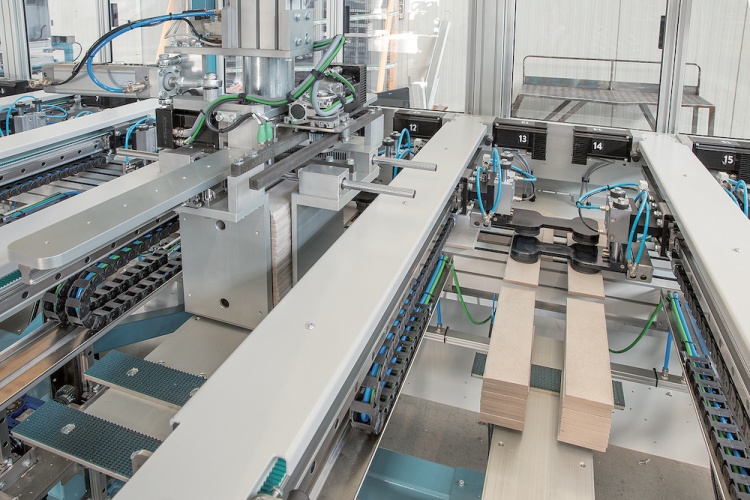
The sorting and packaging of small, medium and large ceramic formats is a crucial phase in the manufacturing process. System has developed Multigecko Special, a fully automated system with high-end technologies designed starting from a mechatronic approach. The hardware is merged with software to give life to an interconnected process, where technology guarantees flexibility and speed for small and medium formats.
The System packaging process is designed also for those needing to pack special parts, and small- to medium-sized components, such as strips, hexagons, ribbed tiles and skirting panels.
The tiles are transported on the conveyor belt on infeed to the sorting bench, where the quality is graded by means of powerful vision, measurement and quality systems specially developed by System (Qualitron, Liner 2000, Red Line). The data obtained is processed by Multigecko Special, which selects the optimal box composition accordingly. In this way the material enters the machine along the infeed conveyor and is collected by the pick-up device to form uniform stacks. Once stacks are complete, the gripper picks them up and positions them in the packaging area. One of the special features consists in the four-axis gripper that is driven by a brushless motor, while 90° rotation is completed by a pneumatic drive.
The great advantage of Multigecko Special lies in a double suction cup, which enables the pick-up of two parts at a time, depositing them onto an independent stacker that processes two stacks simultaneously.
Double axes and double suction cups resulting in a high-speed process for special parts.
The sorter manages two stacks at a time, and a four-jaw gripper picks up the stacks to ensure delivery intact to the packaging line, without losing any parts, regardless of size. Movement is on two axes to manage ‘back and forth journeys’. The pack can be created from pre-formed blanks or from neutral carton customisable on the machine.
As regards the motors, Multigecko Special is equipped with stepper motors with drives developed by System Electronics. The hardware and software have been designed to best respond to the application requirements, such as in the drives, that can operate at high voltages and deliver high currents. Another distinguishing factor is the highly evolved diagnostics system.
The added value in this unit is the possibility of using operating voltages and currents according to the needs for machine movement. What’s more, the power elements of the drives are equipped with temperature sensors to ensure constant monitoring of work conditions. The data is read by special software that emits specific warnings when certain thresholds are reached. This operation has a dual purpose: on the one hand it enables the user to check that the machine is appropriately sized, and on the other the user can intervene and run diagnostics as required.
Management of current is digital, thus enabling the elimination of unpleasant noise levels that traditionally accompany conventional analogue controls.
The drive by System Electronics can also receive commands from a non-real-time network, such as Ethernet. This is a smart system, the function of which does not only depend on the PLC but also a local movement profiler.

 Industry News
Industry News